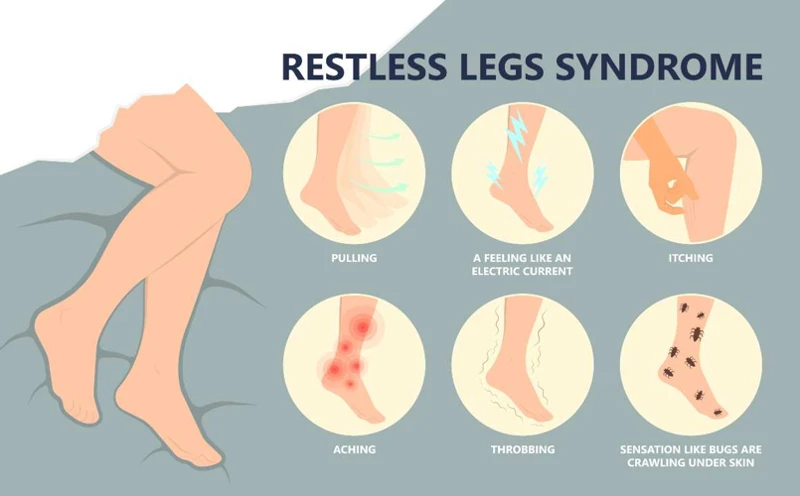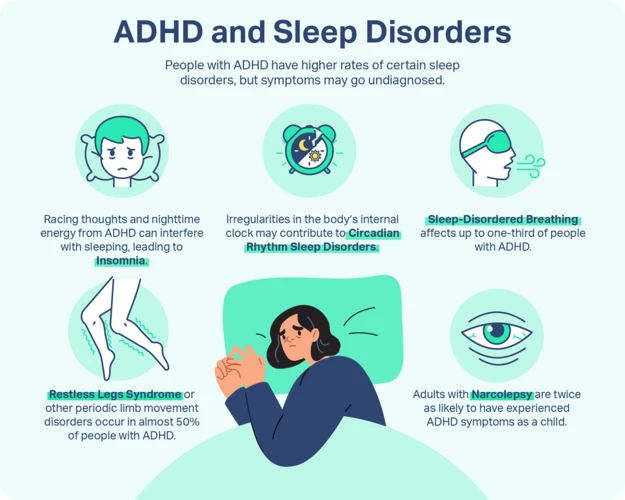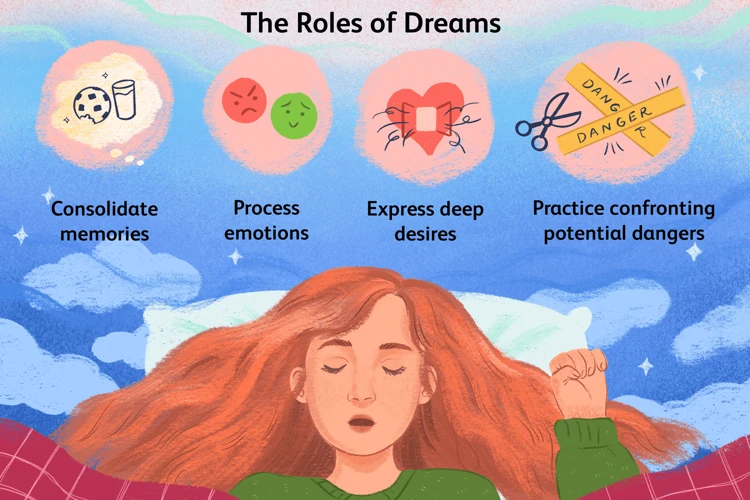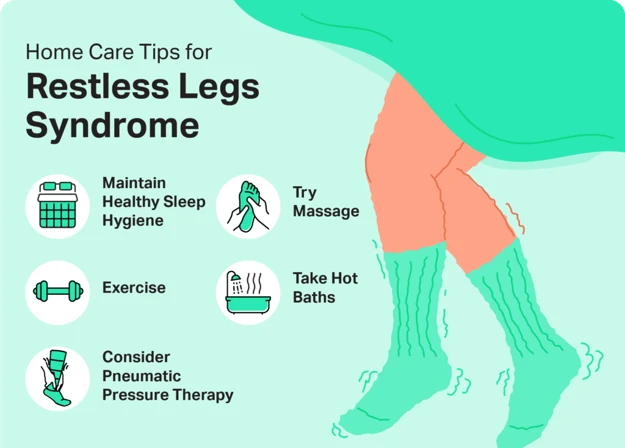If you find yourself constantly dealing with an irresistible urge to move your legs, especially during periods of rest or sleep, you may be experiencing Restless Leg Syndrome (RLS). This neurological condition affects millions of people worldwide and can significantly disrupt their sleep and overall quality of life. In this article, we will explore the link between Restless Leg Syndrome and sleep deprivation. We will delve into the symptoms, causes, and impact of RLS on sleep, as well as discuss various treatments and management strategies to alleviate the symptoms and improve sleep quality. So, if you’re eager to understand how sleep deprivation and RLS are connected and learn effective ways to find relief, read on.
Understanding Restless Leg Syndrome

Restless Leg Syndrome (RLS) is a neurological disorder characterized by an uncontrollable urge to move the legs, often accompanied by uncomfortable sensations. RLS can significantly impact a person’s sleep quality, leading to daytime fatigue and impaired functioning. When it comes to understanding Restless Leg Syndrome, it is important to know its defining characteristics, possible causes, and the symptoms individuals may experience. RLS is typically diagnosed based on specific criteria set by medical professionals. The symptoms of RLS can range from mild to severe and may include sensations of crawling, tingling, or itching in the legs. These symptoms tend to worsen during periods of inactivity or rest, such as when lying down or sitting for prolonged periods. Additionally, RLS symptoms tend to occur or worsen in the evening or at night, which can make falling asleep and staying asleep challenging for those affected. Some potential causes of RLS include genetic factors, iron deficiency, nerve damage, and certain medical conditions. While the exact cause is not always clear, research suggests that an imbalance in dopamine levels in the brain may play a role in RLS development. Understanding the complexities of Restless Leg Syndrome is crucial in finding effective treatment options and improving overall sleep quality. (source)
What is Restless Leg Syndrome?
Restless Leg Syndrome (RLS) is a neurological disorder that is primarily characterized by an irresistible urge to move the legs. People with RLS often describe uncomfortable sensations in their legs, such as itching, tingling, crawling, or aching. These sensations are usually relieved temporarily by moving the legs. RLS symptoms typically worsen during periods of rest or inactivity, especially during the evening or at night, making it difficult for individuals affected by RLS to fall asleep or stay asleep. This can result in chronic sleep deprivation and daytime fatigue. While the exact cause of RLS is not fully understood, researchers believe that a combination of genetic and environmental factors may be involved. Some medical conditions and medications can also contribute to the development or exacerbation of RLS symptoms. Although RLS is not a life-threatening condition, it can significantly impact a person’s quality of life. Diagnosis of RLS is typically based on the characteristic symptoms reported by the individual. Treatment options for RLS include lifestyle changes, medications, and natural remedies that can help manage the symptoms. Exploring the potential connection between RLS and anxiety, as well as seeking medical advice, can provide valuable insights and guidance for individuals dealing with Restless Leg Syndrome. (source)
Symptoms of Restless Leg Syndrome
Restless Leg Syndrome (RLS) is characterized by a range of symptoms that can vary in intensity from person to person. Common symptoms of Restless Leg Syndrome include:
1. Uncomfortable sensations in the legs: Individuals with RLS often experience unpleasant sensations in their legs, such as throbbing, itching, tingling, or crawling. These sensations typically occur deep in the legs and can be difficult to describe.
2. Urge to move: The uncomfortable sensations in the legs lead to an overwhelming urge to move them. People with RLS often feel relief from these sensations by constantly shifting or moving their legs.
3. Worsening symptoms at rest: The symptoms of RLS tend to worsen during periods of inactivity or rest, particularly in the evening or at night. This can make it challenging for individuals to relax and fall asleep, resulting in disrupted sleep patterns.
4. Nocturnal leg movements: RLS can cause involuntary jerking or twitching movements in the legs, which can disrupt sleep and potentially disturb bed partners.
5. Sleep disturbances: Due to the discomfort and urge to move, individuals with RLS often experience difficulty falling asleep and staying asleep, leading to poor quality sleep and daytime fatigue.
6. Impact on daily life: The symptoms of RLS can have a significant impact on a person’s quality of life. These symptoms can interfere with daily activities, work productivity, and overall well-being.
It is important to note that individuals may experience different combinations and severity of symptoms. If you believe you may be experiencing symptoms of Restless Leg Syndrome, it is recommended to consult a healthcare professional for an accurate diagnosis and appropriate management strategies.
Possible Causes of Restless Leg Syndrome
Possible Causes of Restless Leg Syndrome: Understanding the potential causes of Restless Leg Syndrome (RLS) can provide valuable insights into this perplexing condition. While the exact cause of RLS is not fully understood, several factors have been identified as potential contributors. One possible cause is genetics. Studies have shown that individuals with a family history of RLS are more likely to develop the condition themselves. This suggests a possible genetic link to RLS development. Another potential cause is iron deficiency. Iron plays a crucial role in the production and regulation of dopamine, a neurotransmitter that helps control muscle movement. Low iron levels in the brain may disrupt dopamine functioning and contribute to RLS symptoms. Nerve damage is also considered a potential cause of RLS. Conditions such as peripheral neuropathy, which affect the nerves in the legs, can trigger RLS symptoms. Certain medical conditions, such as kidney failure or diabetes, are also associated with an increased risk of developing RLS. Additionally, hormonal changes, particularly during pregnancy, can lead to RLS symptoms. Lastly, certain medications, such as antipsychotics and antidepressants, have been known to worsen or trigger RLS symptoms. Understanding these possible causes of RLS is essential in both managing the condition and exploring potential treatment options.
How Sleep Deprivation Affects Restless Leg Syndrome

Sleep deprivation can have a significant impact on Restless Leg Syndrome (RLS) and exacerbate its symptoms. When individuals do not get enough sleep, it can worsen the intensity and frequency of RLS symptoms. Lack of sleep can lead to increased discomfort and restlessness in the legs, making it difficult for individuals to find relief or stay asleep. The relationship between sleep deprivation and RLS is cyclical, as RLS symptoms can disrupt sleep, leading to further sleep deprivation. This vicious cycle can ultimately result in chronic sleep deprivation, causing daytime fatigue, irritability, and reduced cognitive function. It is crucial for individuals with RLS to prioritize healthy sleep habits and ensure they receive adequate rest to mitigate the impact of sleep deprivation on their condition. This may involve implementing strategies to improve sleep quality and practicing proper sleep hygiene. By addressing sleep deprivation, individuals can effectively manage their RLS symptoms and enhance their overall well-being.
The Impact of Sleep Deprivation on RLS Symptoms
Sleep deprivation can have a significant impact on the symptoms of Restless Leg Syndrome (RLS). Lack of sufficient sleep can exacerbate the intensity and frequency of RLS symptoms, making it even more difficult for individuals to find relief. Here are some ways in which sleep deprivation affects RLS symptoms:
1. Increased discomfort: Sleep deprivation can heighten the discomfort experienced by individuals with RLS. The lack of sleep can intensify the sensations of crawling, tingling, or itching in the legs, causing greater distress and restlessness.
2. Worsened urge to move: RLS is characterized by an uncontrollable urge to move the legs, which often brings relief. However, sleep deprivation can amplify this urge, making it more challenging to sit or lie still for extended periods.
3. Impaired sleep initiation: Difficulty falling asleep is a common symptom of RLS, and sleep deprivation can exacerbate this problem. Individuals may find it even more challenging to initiate sleep due to the intensified symptoms, leading to prolonged periods of wakefulness.
4. Interrupted sleep: The uncomfortable sensations and urge to move associated with RLS can cause frequent awakenings throughout the night. Sleep deprivation further disrupts sleep continuity, resulting in a fragmented sleep pattern and leaving individuals feeling tired and unrefreshed upon waking.
5. Daytime fatigue and reduced cognitive function: The combination of RLS symptoms and sleep deprivation can lead to excessive daytime fatigue, making it difficult to focus, concentrate, and perform daily tasks effectively. This can have a negative impact on overall productivity and well-being.
It is crucial for individuals with RLS to address sleep deprivation and work towards improving their sleep quality. By doing so, they can potentially alleviate the severity of RLS symptoms and improve their overall sleep experience. Managing sleep deprivation is an essential aspect of RLS treatment and can involve various strategies such as improving sleep hygiene and incorporating relaxation techniques into bedtime routines. Seeking professional medical advice and exploring treatment options specific to RLS can also be beneficial in managing both sleep deprivation and RLS symptoms effectively.
Relationship between Sleep Quality and RLS Severity
The relationship between sleep quality and the severity of Restless Leg Syndrome (RLS) symptoms is a crucial aspect to consider when managing the condition. Poor sleep quality can exacerbate RLS symptoms, while effectively addressing sleep issues can lead to a reduction in RLS severity. Research has shown that individuals with RLS often experience disrupted sleep patterns, including difficulties falling asleep and frequent awakenings throughout the night. This can result in chronic sleep deprivation, which in turn can increase the intensity and frequency of RLS symptoms. The disrupted sleep caused by RLS can create a vicious cycle, as the symptoms worsen with sleep deprivation, leading to even poorer sleep quality. Conversely, improving sleep quality can help alleviate RLS symptoms. Creating a conducive sleep environment, practicing good sleep hygiene, and adopting relaxation techniques before bedtime can contribute to better sleep. Additionally, establishing a regular sleep schedule and ensuring a comfortable mattress and pillow can further improve sleep quality. Managing factors that can disrupt sleep, such as stress, caffeine, and nicotine, can also make a significant difference in reducing RLS severity. By recognizing the bidirectional relationship between RLS severity and sleep quality, individuals with RLS can focus on improving their sleep habits and implementing strategies to break the cycle and find relief from their symptoms.
Treatments and Management

When it comes to treating and managing Restless Leg Syndrome (RLS), there are various approaches that can help alleviate symptoms and improve sleep quality. Medications prescribed by healthcare professionals target the underlying causes of RLS and aim to reduce symptoms. These medications may include dopamine agonists, opioids, or medications that increase iron levels in the body. Lifestyle changes, such as maintaining a regular sleep schedule, practicing good sleep hygiene, and incorporating relaxation techniques, can also play a vital role in managing RLS. Engaging in regular exercise, avoiding stimulants like caffeine and nicotine, and applying heat or cold therapy to the affected limbs can provide relief. Additionally, alternative treatments like acupuncture, massage, and yoga have shown promise in reducing RLS symptoms and improving sleep quality. It is important to consult with a healthcare professional to determine the most appropriate treatment plan for individual needs. By combining medical interventions with holistic approaches, individuals with RLS can find effective strategies to manage their symptoms and enjoy restful nights.
Medications for Restless Leg Syndrome
There are several medications that can be prescribed to help manage the symptoms of Restless Leg Syndrome (RLS). These medications aim to alleviate discomfort and improve sleep quality for individuals with RLS. One commonly prescribed class of medications for RLS is dopamine agonists. These medications work by increasing the levels of dopamine in the brain, which helps regulate muscle movement and may reduce the urge to move the legs. Some examples of dopamine agonists used for RLS include pramipexole and ropinirole. Another medication option for RLS is benzodiazepines, which are sedative agents that can help promote relaxation and improve sleep. However, they are typically used for short-term relief due to the risk of dependency and tolerance. Anticonvulsants such as gabapentin and pregabalin can also be prescribed as they help reduce abnormal electrical activity in the brain, which may relieve RLS symptoms. Opioids are sometimes used for individuals with severe RLS who have not responded well to other treatments. These medications can help reduce the sensations and discomfort associated with RLS, but their use requires careful monitoring by a healthcare professional due to the risk of dependence and side effects. It is important to note that medication for RLS should be prescribed and monitored by a healthcare provider who specializes in sleep medicine or neurological disorders. They will take into account the severity of symptoms, individual medical history, and potential interactions with other medications before determining the most appropriate treatment plan.
Lifestyle Changes to Improve Sleep and RLS
Implementing certain lifestyle changes can be beneficial in improving both sleep quality and managing the symptoms of Restless Leg Syndrome (RLS). Here are some practical tips that can help:
1. Establish a Consistent Sleep Schedule: Going to bed and waking up at the same time every day can help regulate your body’s internal clock and promote better sleep. Aim for at least 7-9 hours of uninterrupted sleep each night.
2. Create a Relaxing Bedtime Routine: Engage in activities that help you wind down and signal to your body that it’s time to sleep. This can include reading a book, taking a warm bath, practicing relaxation techniques like deep breathing or meditation, or listening to calming music.
3. Create a Sleep-Friendly Environment: Make your bedroom conducive to sleep by keeping the room cool, dark, and quiet. Consider using blackout curtains, earplugs, or a white noise machine to block out any disruptions.
4. Avoid Stimulants: Limit the consumption of caffeine, nicotine, and alcohol, especially close to bedtime, as these substances can interfere with sleep. It’s best to avoid consuming them altogether if possible.
5. Exercise Regularly: Engaging in moderate-intensity exercise, such as brisk walking or swimming, can promote better sleep quality and help reduce RLS symptoms. However, try to avoid exercising too close to bedtime, as it may make it harder to fall asleep.
6. Practice Leg Stretches and Relaxation Exercises: Gentle stretching exercises, particularly for the legs, can alleviate discomfort and restlessness associated with RLS. Incorporate exercises that target the leg muscles, such as calf stretches or yoga poses, into your daily routine.
7. Manage Stress: Stress can exacerbate RLS symptoms and disrupt sleep. Find healthy coping mechanisms to manage stress, such as engaging in mindfulness practices, journaling, or talking to a therapist.
8. Consider Alternative Therapies: Some individuals find relief from RLS symptoms through alternative therapies like acupuncture, massage therapy, or the use of heat or cold packs on the affected legs. Consult with a healthcare professional to determine if these therapies are suitable for you.
It’s important to note that while these lifestyle changes can be helpful, they may not completely eliminate RLS symptoms. If your symptoms persist or worsen, consult with a healthcare provider for further evaluation and treatment options. (source)
Prevention Tips
Preventing Restless Leg Syndrome (RLS) and minimizing its impact on sleep can greatly improve the quality of life for individuals affected by this condition. Here are some effective prevention tips to consider:
- Establish a Regular Sleep Schedule: Maintaining a consistent sleep routine can help regulate your body’s internal clock and improve sleep quality. Try to go to bed and wake up at the same time every day, even on weekends.
- Practice Relaxation Techniques: Engage in relaxation techniques before bedtime, such as deep breathing exercises, meditation, or gentle stretching. These techniques can help relax your body and prepare it for sleep.
- Create a Sleep-Friendly Environment: Make sure your bedroom is dark, quiet, and at a comfortable temperature. Consider using blackout curtains, earplugs, or white noise machines to create a peaceful sleep environment.
- Avoid Stimulants: Limit your intake of caffeine, nicotine, and alcohol, especially close to bedtime. These substances can interfere with your sleep patterns and worsen RLS symptoms.
- Engage in Regular Exercise: Regular physical activity can help alleviate RLS symptoms and improve sleep quality. Aim for moderate-intensity exercises, such as walking, swimming, or yoga, but avoid exercising too close to bedtime.
- Manage Stress Levels: Stress can exacerbate RLS symptoms and disrupt sleep. Find healthy ways to manage stress, such as practicing mindfulness, engaging in hobbies, or seeking support from friends and family.
By implementing these prevention tips into your daily routine, you can significantly reduce the severity of Restless Leg Syndrome symptoms and promote better sleep quality. Remember to consult with a healthcare professional for personalized advice and treatment options.
Conclusion
In conclusion, Restless Leg Syndrome (RLS) and sleep deprivation are closely linked. RLS can disrupt sleep and lead to sleep deprivation, while sleep deprivation can exacerbate RLS symptoms. By understanding the relationship between these two, individuals with RLS can take proactive measures to manage their condition and improve their sleep quality. It is important to seek medical advice if experiencing symptoms of RLS to receive an accurate diagnosis and appropriate treatment. Medications and lifestyle changes, such as regular exercise, maintaining a sleep schedule, and practicing relaxation techniques, can help alleviate RLS symptoms and promote better sleep. Additionally, addressing any underlying medical conditions or deficiencies, particularly iron deficiency, can play a significant role in managing RLS. By adopting a comprehensive approach that combines medication, lifestyle adjustments, and addressing underlying causes, individuals can effectively manage their RLS and minimize sleep deprivation. It is crucial to prioritize sufficient sleep to support overall health and well-being. With proper management and attention to sleep quality, individuals with RLS can achieve better rest and enjoy improved quality of life.
Frequently Asked Questions
1. Can Restless Leg Syndrome (RLS) occur during the daytime?
Yes, RLS symptoms can occur during the daytime, although they are more common and typically worse in the evening or at night when the individual is at rest or lying down.
2. Is Restless Leg Syndrome a common condition?
Yes, Restless Leg Syndrome is a fairly common condition that affects millions of people worldwide. It can occur at any age, although it is more prevalent in middle-aged and older individuals.
3. Can anxiety worsen symptoms of Restless Leg Syndrome?
Yes, there is a potential link between anxiety and worsening symptoms of Restless Leg Syndrome. Stress and anxiety can exacerbate the discomfort and restlessness in the legs, making it harder to find relief and get quality sleep.
4. Are there any natural remedies that can help alleviate Restless Leg Syndrome symptoms?
Yes, there are several natural remedies that may offer relief for RLS symptoms. These include regular exercise, avoiding caffeine and alcohol, practicing relaxation techniques, and applying heat or cold to the affected area.
5. Can certain medications aggravate Restless Leg Syndrome symptoms?
Yes, certain medications, such as antihistamines and antidepressants, have been known to worsen RLS symptoms. It is important to discuss any medication concerns with a healthcare professional.
6. Does pregnancy increase the risk of developing Restless Leg Syndrome?
Yes, pregnancy is a known risk factor for Restless Leg Syndrome. The hormonal and circulatory changes that occur during pregnancy can contribute to the development or worsening of RLS symptoms.
7. Can treating iron deficiency improve Restless Leg Syndrome symptoms?
Yes, for individuals with RLS and iron deficiency, iron supplementation may help improve symptoms. It is important to consult with a doctor to determine the appropriate dosage and monitor iron levels.
8. Is Restless Leg Syndrome solely a physical condition?
No, Restless Leg Syndrome can have both physical and psychological components. The impact of sleep disturbance and the chronic discomfort associated with RLS can lead to emotional distress and affect a person’s overall well-being.
9. Can Restless Leg Syndrome be a symptom of an underlying condition?
Yes, in some cases, Restless Leg Syndrome can be secondary to an underlying medical condition such as peripheral neuropathy, kidney disease, or diabetes. Treating the underlying condition may help alleviate RLS symptoms.
10. Can stress management techniques help improve Restless Leg Syndrome symptoms?
Yes, stress management techniques such as deep breathing exercises, mindfulness meditation, and progressive muscle relaxation can help reduce stress levels and potentially improve RLS symptoms.








